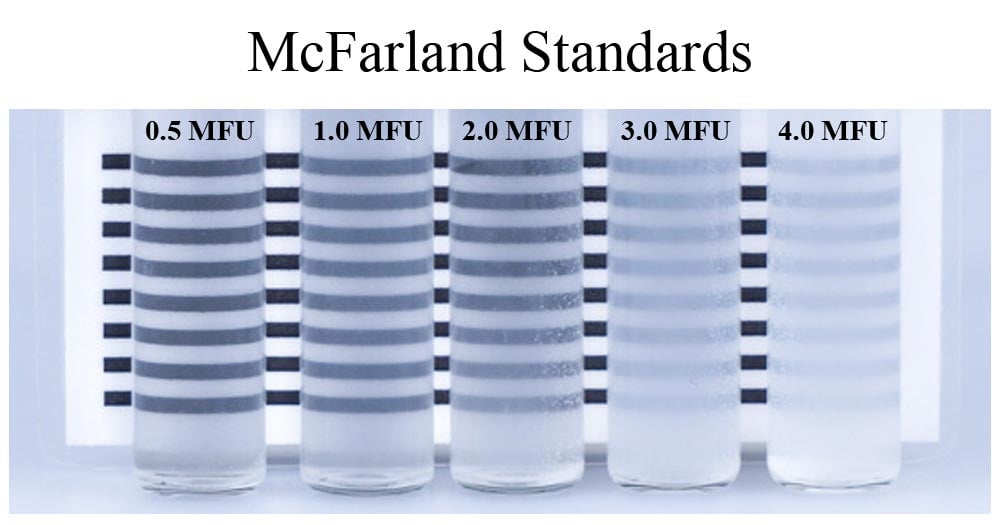Say you have a bacterial isolate and you need to check its antibiotic resistance profile. In this case, you need to do an antibiogram study. Ideally, you’ll need to make bacterial lawn on Mueller-Hinton agar medium for doing antibiogram. For that purpose, you prepare bacterial culture from stock in nutrient broth and place it in shaking-incubator. When the culture is young enough, that means when the bacteria on the beginning of its growth phase, you use the culture to make lawn on Mueller-Hinton agar plate. How do you know the culture is young? The common practice is to measure its spectrophotometric absorbance at 600nm. If the culture’s optical density or OD is near to 0.1, then it is perfect for making a lawn. Very simple procedure.

But this can be a cumbersome job when you have to handle many bacterial cultures rather than one. If bacterial samples you are working with are of different species, then their binary fission time will vary. For some bacteria cell division rate is higher and it’s culture will approach to 0.1 OD fast. For other, the rate will be slow and thereby their culture will take time to get that point.
That means if you have ten bacterial isolate, for example, and you need to check antibiogram of all of them, you need to prepare their culture and check their OD time to time to track when a culture reachs your desired OD. To check OD you have to repetitively use a spectrophotometer. When a culture reaches the desired OD, you rush to make a lawn. Meanwhile, you need to continue measuring OD of other cultures too time to time. Cumbersome process – right?

But this could be easier. What if you use a visual comparator? By using McFarland standard, one can set-up a chemical solution with specific turbidity which can be visually compared with culture solution to check if culture’s turbidity has reached to intended OD.
McFarland standard is a solution of 1% barium chloride and 1% sulphuric acid. When this salt and acid is mixed, they form insoluble barium sufate complex and cause white precipitation. Predefined proportion of barium chloride and sulfuric acid is known, which after mixing will lead formation of McFarland standard solution with defined absorbances. It is possible to prepare McFarland solution with 0.1 OD at 600 nm wavelength. This is equivalent to 0.5 McFarland standard. This standard can be visually compared with a suspension of bacteria in saline or nutrient broth. The 0.5 McFarland standard solution can be prepared by 0.05 ml of 1% barium chloride and 9.95 ml 1% sulphuric acid. When you visually detect that you culture’s turbidity is equivalent to 0.5 McFarland standard, you know this solution contains approximately 1.5 x 10^8 CFU/ml and perfect for making lawn in Petri plate.
Once prepared, McFarland standard can be kept for future use. But there are some precautions of using this solution. McFarland standard is sensitive to light and air. So you need to close the tube tightly and wrap it using aluminum foil or paper or keep in the dark. Also, the level of solution is needed to be checked occasionally that the volume is not reduced by evaporation. Before using as visual comparator, the solution needs to be shaken vigorously.
A table showing the composition of different McFarland standards and their absorbance, transmittance, and approximate cell density can be found in Wikipedia article of this topic. This simple hack can ease your antibiogram and in other bacterial-growth related experiments.
Find more at this wiki-article.

Leave a Reply